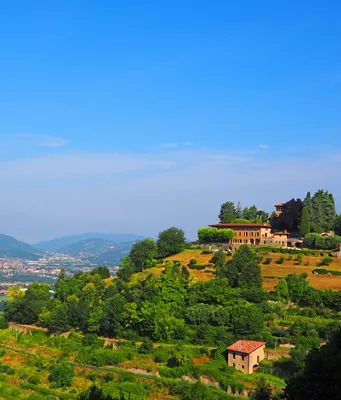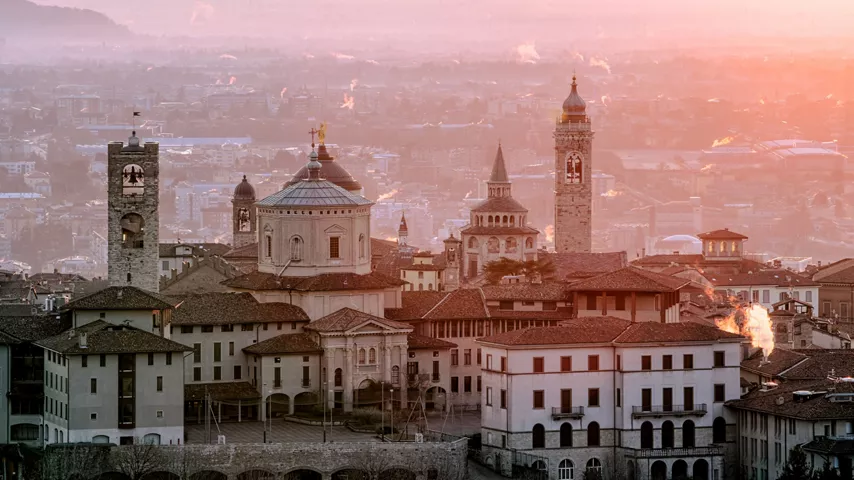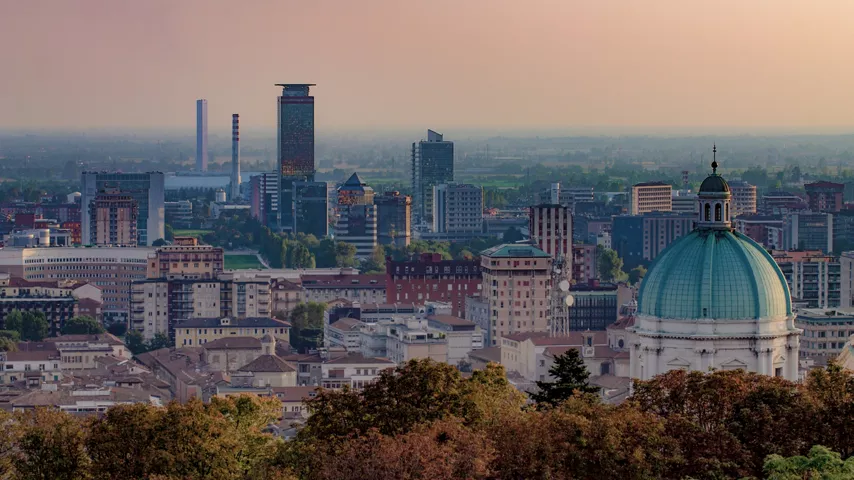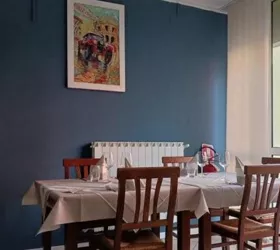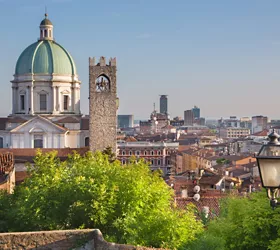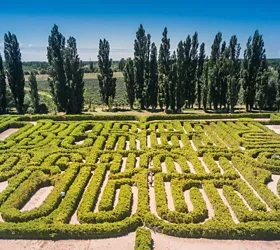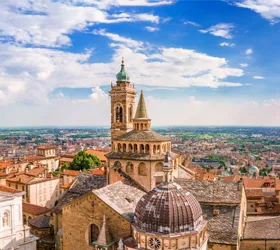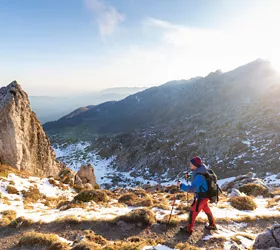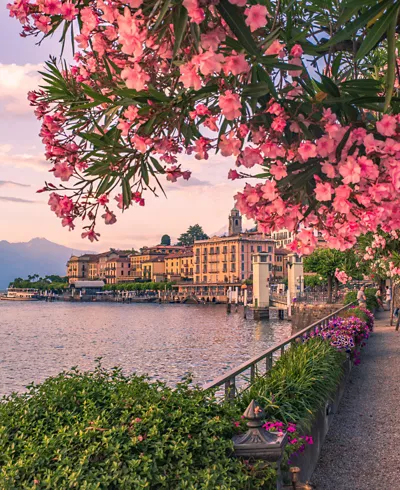Bergamo Brescia Italian Capital of Culture 2023
What it means to be the Italian Capital of Culture
Becoming the Italian Capital of Culture makes it possible to promote the development of the city itself through its artistic heritage, to make it an engine of growth for the entire community.
The aim of this initiative is to support Italian cities in the field of culture, which is decisive for improving social cohesion, integration, innovation, economic development and both individual and collective well-being.
Brescia and Bergamo were selected for their unique cultural wealth, which is to be discovered in a year of unmissable events, such as exhibitions, concerts, festivals and theatrical performances.
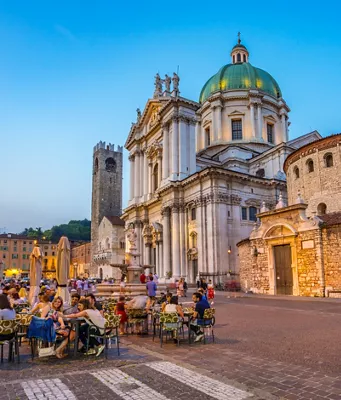
Two cities, one Italian Capital of Culture 2023
It was precisely Bergamo and Brescia that applied to form a single Capital together. 'The Illuminated City' is the theme of a programme of initiatives and events taking place throughout the year, with the lights of culture switched on.
It will be divided into four thematic areas: the city of nature, the city of hidden treasures, the city that invents, and culture as a cure.
The project was conceived as a gesture of hope, pride and revitalisation of two cities that are located just 40 minutes’ drive from each other. To implement the project, universities, craft, school and tourism associations, environmental and service organisations, creative and food and wine enterprises were all involved.
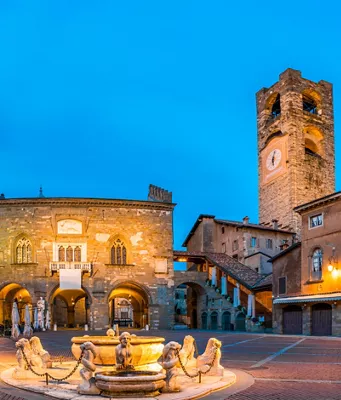
Places not to be missed
Bergamo and Brescia combine their respective treasures to enhance a marvellous artistic and cultural ensemble.
One of the symbols of Brescia Capital of Culture is its Castle, a mediaeval fortress perched on the Cidneo hill. It stands close to the historic centre and today is home to the 'Luigi Marzoli' Museum of Arms, and the first public astronomical observatory in Italy.
The beating heart of Bergamo Capital of Culture, on the other hand, is Piazza Vecchia in the Upper Town. Here, you can stop for a coffee and try the typical dessert, polenta e osèi (a type of sponge cake). You can also admire the Contarini Fountain, visit the Palazzo della Ragione, the Palazzo del Podestà, the Angelo Mai Library and the Civic Tower.
The artistic and architectural treasures do not end here. The Teatro Grande in Brescia and the Accademia Carrara in Bergamo are unmissable. Then there is the Basilica S. Maria Maggiore, and the Sanctuary of Santa Maria delle Grazie in Brescia.
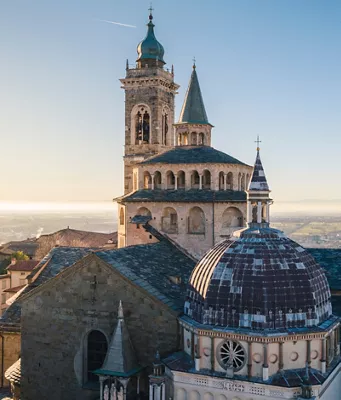
UNESCO sites, squares and fortresses
It is impossible to mention Bergamo and Brescia without mentioning their UNESCO World Heritage Sites. Bergamo has its Venetian Walls, while Brescia is home to the Brixia Archaeological Park; together with the monastic complex of San Salvatore - Santa Giulia it is the largest Roman archaeological area in northern Italy.
The city's squares also encapsulate centuries of history and architecture. There are treasures such as Piazza della Vittoria or Piazza del Foro, Piazza della Loggia or Piazza Paolo VI in Brescia and Piazza Dante, Piazza Pontida and Piazza Vittorio Veneto, to which we can add the Sentierone and the Centro Piacentiniano in Bergamo. Finally, let's not forget the fortresses, from the Castle to the Torri d'Ercole and the Pallata of Brescia, to that of San Vigilio and the Rocca in Bergamo.
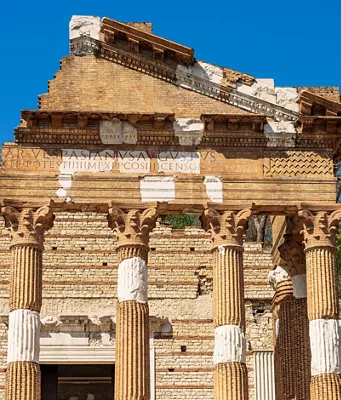
Among food and bubbles
A trip to the Italian Capital of Culture 2023 also delights the palate; from the PDO cheeses of the Cheese Valleys to the fine wines and bubbles of Franciacorta and the casoncelli, a delicious filled pasta.
Thanks to its specialities - wine and spirits, typical cheeses, oil, truffles, lake fish and caviar - Brescia and Bergamo, together with Cremona and Mantua, have been named European Gastronomy Region 2017.
Bergamo, thanks to its 30 traditional cheeses, including 9 PDO and 3 of slow-food origin, holds the title of European Cheese Capital. On the tables here we also find polenta, cured meats, wine and craft beers. And don't forget to sample the stracciatella ice cream, invented right here. In 2019, Bergamo received the Unesco award as Creative City for Gastronomy.
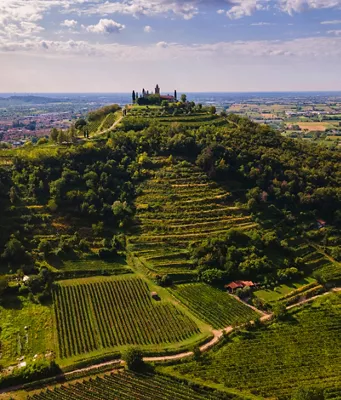
Paths immersed in nature
The marvellous surrounding landscapes make these popular destinations for rejuvenating out-of-town trips. There are many excursions available in the area, along a dense network of paths, among mountains with breathtaking views, valleys, alpine lakes and forests.
For example, take a walk along the renowned Scalette di Bergamo, or explore the 15 kilometres of the Parco delle Cave, south of Brescia. Hiking on the paths of the Parco dei Colli di Bergamo or those of the Brescian Monte Stino, you will come across the remains of ancient mule tracks.
